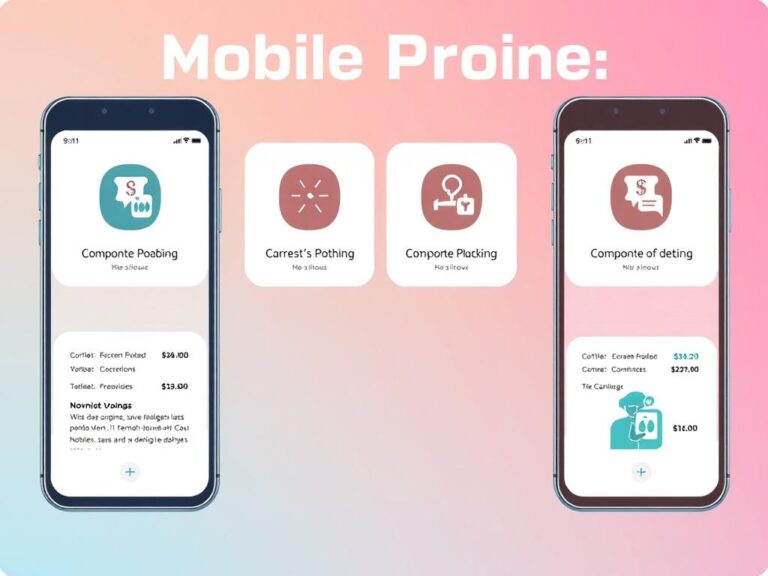
A proxy server sits between your device and the wider internet, quietly relaying requests and responses. Think of it as a receptionist for your network: you ask for a web page, the receptionist forwards the request, gets the answer, and passes it back. That simple image hides a lot of variety and detail. Proxies can speed up browsing, hide your IP address, enforce company policies, or act as a traffic gatekeeper for huge web services. They are versatile tools, used by individuals and organizations alike. Understanding proxies matters because online privacy and performance are now everyday concerns. Whether you’re trying to reduce bandwidth costs, bypass a geo-restriction, or protect an internal server, a proxy can be part of the solution. In the sections below I’ll walk through what proxies do, the main types, common protocols, real-world use cases, setup basics, security trade-offs, and how to choose the right one for your needs.
What a Proxy Server Actually Is
At its core, a proxies for business is an intermediary that receives client requests, performs some action on behalf of the client, and then forwards results. The client talks to the proxy, not directly to the target server. That intermediary role is what gives proxies their power: they can modify requests, cache responses, filter traffic, or mask identity. This middleman behavior creates three useful effects. First, you can hide or change the source of requests — helpful for privacy or geo-unblocking. Second, you can cache frequently requested content, reducing repeated downloads and improving speed. Third, you can inspect and control traffic, which makes proxies useful for security policies and parental controls. These effects are why proxies are used so widely, from small home setups to massive enterprise architectures.
How Proxy Servers Work
A browser or application sends a request to the proxy. The proxy inspects that request, applies rules or transformations if needed, and then forwards it to the destination server. When the destination replies, the proxy relays the response back. Simple as that, but the details vary: some proxies change headers, others rewrite URLs, and some cache responses to serve later requests faster. Proxies can operate at different layers of the network stack. Application-layer proxies understand specific protocols like HTTP and can modify headers or content. SOCKS proxies work at a lower level, forwarding arbitrary TCP or UDP streams without interpreting them. That difference affects capability: HTTP proxies can do content-aware filtering, while SOCKS proxies are more flexible for non-web traffic.
Forward vs Reverse Proxies
Forward proxies act on behalf of clients. A user or group of users route their outbound requests through a forward proxy. The proxy hides the internal client addresses and can implement access controls or caching for those users. Small companies often use forward proxies to centralize web access and apply browsing rules. Reverse proxies sit in front of web servers, acting on behalf of one or many backend servers. Incoming traffic hits the reverse proxy, which can distribute requests across servers, cache static content, terminate TLS (SSL), and protect internal servers from direct exposure. Large websites and cloud services rely heavily on reverse proxies for load balancing and edge security.
Transparent, Anonymous, and Elite Proxies
Transparent proxies do not hide the client’s IP; they often operate for caching and content filtering without user anonymity. Anonymous proxies hide the client IP but still reveal that a proxy is used. Elite (or high-anonymity) proxies hide both the client IP and the fact that a proxy is present. The level of anonymity matters for privacy-focused use and for sites that block proxy-based access.
Common Proxy Protocols
Different protocols define how proxies handle traffic. The most common are HTTP, HTTPS, and SOCKS, each with distinct characteristics.
- HTTP proxies: Understand and modify HTTP requests and responses. Good for web filtering and caching.
- HTTPS (SSL/TLS) proxies: Often perform TLS termination or pass-through. They can decrypt and inspect traffic if configured as an intercepting proxy, which requires trusted certificates.
- SOCKS proxies: Work at the transport layer and forward arbitrary TCP/UDP streams. Useful for protocols beyond HTTP, such as FTP, SMTP, or certain gaming traffic.

Some commercial services also offer specialized APIs and protocols for rotating residential IPs or integrating proxy pools. The protocol you choose should match your application: use HTTP for web-only tasks, SOCKS when you need broader protocol support, and HTTPS when encryption and secure handling are essential.
Practical Use Cases
Proxies are surprisingly practical. Here are common scenarios where they shine.
Privacy and anonymity: For individuals who want to hide their IP address from websites or trackers, a proxy can add a layer of separation. It’s not a perfect privacy tool, but it’s helpful when you need a different IP for casual browsing or testing.
Geolocation and content access: Many people use proxies to appear as if they are in another country. This is useful for accessing region-locked services, testing localized versions of websites, or ad verification.
Performance and caching: Organizations place caching proxies at network edges to serve popular content locally, saving bandwidth and improving load times. This is particularly effective for large deployments with repetitive content requests.
Security and control: Companies use proxies to enforce browsing policies, block malicious sites, and inspect outbound traffic. Reverse proxies protect internal services by terminating TLS, filtering requests, and handling rate limiting.
Load balancing and availability: Reverse proxies distribute incoming traffic across multiple backend servers, improving redundancy and smoothing peak loads. They also provide health checks and automatic failover to keep services running.
Proxy vs VPN: What’s the Difference?
Both proxies and VPNs route traffic through an intermediary, but they have different goals and technical approaches. A VPN creates an encrypted tunnel between your device and the VPN server, routing all network traffic (typically) through that tunnel. It’s designed for comprehensive privacy and secure remote access. A proxy usually handles specific applications or protocols and often does not encrypt traffic by default. HTTP proxies manage web traffic only; SOCKS proxies handle broader types but still may not encrypt. Proxies are lighter-weight, easier to set up for single applications, and can be faster for targeted uses, but they lack the system-wide protection and encryption a VPN provides.
Setting Up a Proxy: Basic Steps
Setting up a proxy depends on purpose and scale. Here’s a straightforward checklist for a small host or personal proxy, and notes for enterprise needs.
- Choose the proxy type and protocol (HTTP, HTTPS, SOCKS, reverse vs forward).
- Select software: popular options include Squid for caching HTTP proxies, Nginx or HAProxy for reverse proxying and load balancing, and Dante for SOCKS.
- Install and configure the service on a host with reliable network access. Configure listening ports, allowed clients, and upstream behavior.
- Implement authentication and access control to prevent unauthorized use. Consider IP allowlists, username/password, or token-based methods.
- Set up TLS if handling HTTPS. For interception, install trusted certificates on client devices; for pass-through, configure TLS termination appropriately.
- Enable logging and monitoring. Track usage, errors, and performance metrics so you can troubleshoot and optimize.
- Test thoroughly from different client environments. Verify that caching, anonymity, or routing behave as expected.
For enterprise deployments, add redundancy (multiple proxy instances), automated configuration management, and integration with identity providers for centralized access control.
Security Risks and Best Practices
Proxies bring benefits but also risks. Misconfigured or public proxies can leak data, introduce malware, or be used as attack vectors. Here’s how to reduce those risks.
- Use authentication and rate limits to prevent abuse.
- Encrypt traffic between clients and proxies, especially if the proxy inspects or modifies HTTPS traffic.
- Keep proxy software patched and subscribe to security advisories for your chosen product.
- Monitor logs for unusual traffic patterns that could indicate misuse or compromise.
- Isolate proxy servers in a DMZ or segmented network zone to reduce lateral movement risk if they are breached.
- When using third-party provider proxies, vet their privacy policies and operational controls. Residential proxy providers may have questionable sourcing practices.
A proxy that inspects TLS necessarily has access to decrypted data; treat that capability as a high-risk, high-responsibility feature and restrict it to trusted environments.
How to Choose the Right Proxy
Choosing depends on goal, budget, and technical constraints. The table below summarizes common proxy types and when they fit.
| Type | Anonymity | Typical Uses | Pros | Cons |
|---|---|---|---|---|
| HTTP Proxy | Variable (transparent to anonymous) | Web filtering, caching, traffic control | Protocol aware, efficient for web | Limited to HTTP/HTTPS unless combined with other tools |
| SOCKS Proxy | Typically anonymous | Non-web apps, P2P, gaming, tunneling | Protocol-agnostic, flexible | No built-in content filtering; may need extra security |
| Reverse Proxy | Not about anonymity | Load balancing, TLS termination, web acceleration | Improves resilience and protection for servers | Can become a single point of failure without redundancy |
| Residential/Rotating Proxy | High (varies by provider) | Web scraping, ad verification, geo-testing | Less likely to be blocked by sites | Expensive, potential ethical/legal concerns |
Choose an HTTP proxy for web-centric tasks, SOCKS for broader protocol needs, and reverse proxies when you manage server fleets. If your goal is privacy and encryption for all traffic, a VPN is likely a better fit.
Legal and Ethical Considerations
Proxies can be used for legitimate activities but they can also veil wrongdoing. Using a proxy to access copyrighted material, bypass paywalls, or impersonate users may violate laws or terms of service. Companies using proxies for monitoring should respect employee privacy laws and disclose relevant policies. When evaluating third-party proxy providers, ask about how IPs are sourced. Some residential proxy networks route traffic through end-user devices without clear consent, which raises serious ethical and legal concerns. Always favor transparent providers that document sourcing, logging practices, and compliance measures.
Conclusion
Proxy servers are practical, multipurpose tools that sit between clients and the internet to provide anonymity, control, caching, and load distribution. They come in many flavors — HTTP, SOCKS, forward, reverse, transparent, and elite — and each serves different needs. Choose a proxy based on the protocol you must support, the level of anonymity required, and the security posture you can maintain. Deploy them thoughtfully: enforce authentication, monitor traffic, keep software updated, and consider ethical and legal implications. With the right design, proxies improve performance, protect systems, and enable use cases that range from simple privacy tweaks to complex enterprise-scale traffic management.





Recent Comments